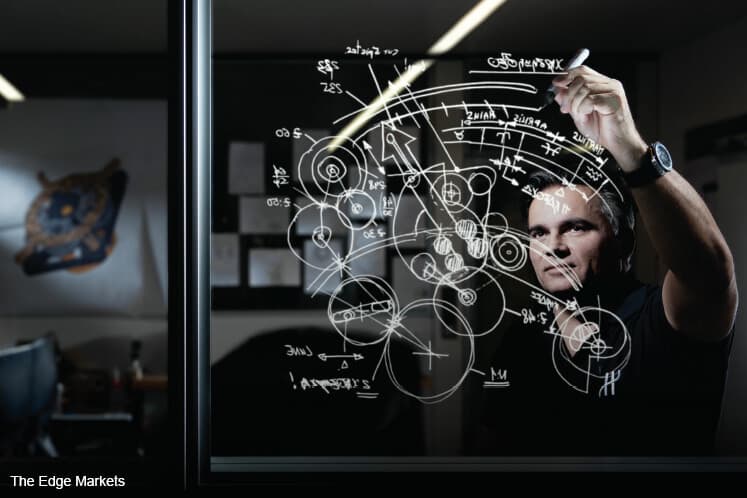
This article first appeared in The Edge Financial Daily on June 7, 2017
Hublot’s personality as a watchmaker is flawlessly encapsulated by its bold and audaciously designed timepieces that defy conventions at every turn. Especially notable is the unusual approach the watchmaker has taken towards the use of new materials, which falls under the purview of its research and development director Mathias Buttet. In a brief but frank interview at Baselworld’s recent Watch and Jewellery Show, he talks about what working with Ferrari was like and how the experience has changed him.
What does your role as research director involve?
I oversee various departments — this includes materials research, as well as the team that manages the submarine drones we use for the Antikythera expeditions. We have at least up to 10 research projects that are ongoing at any given time, and some no one will ever know about because sometimes it may not be suitable to be used in watchmaking. Some projects take five years, some 10. I manage all these projects and try to find a way to bring innovation into Hublot’s watchmaking.
New materials? Oh, that is so interesting!
This is definitely quite unique to Hublot. To some people it is work, but I love the research work I do. I love to see how the team works … they are like grown-up kids! They don’t all speak the same language, but they are all so creative and they get along so well. It’s fun.
What was it like to work with the legendary team of designers at Ferrari?
It’s a concept of fusion of not just two big brands, but also of both companies’ ideas of technology and design. With watches prior to La Ferrari, Hublot would design the complete watch and submit it to Ferrari for validation. With La Ferrari, Hublot designed the movement but the case design was entirely up to the design team at Ferrari.
It was two egos coming together and each designer had their own design philosophies that they were rightly proud of. The first day was hard, with both sides not backing down — all talk, not much done. It was hard to see how we were going to find common ground. In terms of technical points of view, watchmakers have the upper hand. But in terms of design, they had more liberties and more specific points of view. But no matter what, the final product is what matters. Despite all the differences, the final product was very well received and that’s all that matters.
What was the biggest learning that you took away from the collaborative process?
What we learnt is to be open minded. Going into this partnership, we had very specific opinions about what could be done. But now, we realise that it is very important to be receptive of other parties’ opinions and see how it can mould our point of view.
How will those learnings affect the design of future watches?
Yes, of course. But not so much in terms of design, but new materials. Titanium has existed in the automotive industry for many years but it hasn’t been used in watches up to recently. We will be introducing a new material for our watches that’s also used in cars. I cannot say what, but I can tell you that it is very light and very strong. Hopefully we can announce this at the end of the year.
What is your favourite Hublot watch?
It is the Key of Time — the concept is that if you are having so much fun, you can make time go slowly. But if you are having an awful time, then make it go faster! I love the idea of owning your own time, which is unusual. With Key of Time, you can totally be in charge and you can opt to be in a totally different time zone form anyone else if you’d like. Yes, the idea is a little crazy, but it is why I like it.
I remember when I first showed Key of Time to Biver, he said ‘Ah, this is a watch only Mathias will love so let’s just make 20.’ But we have sold 200 pieces — which shows that more people understand this concept that we initially expected. It also shows that I was right.